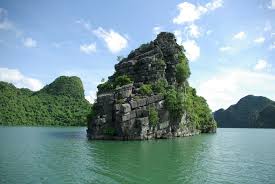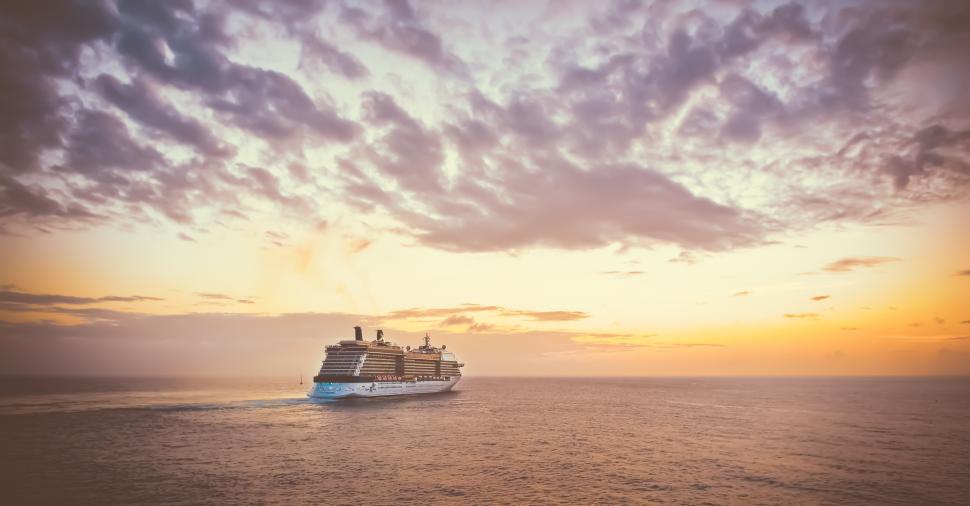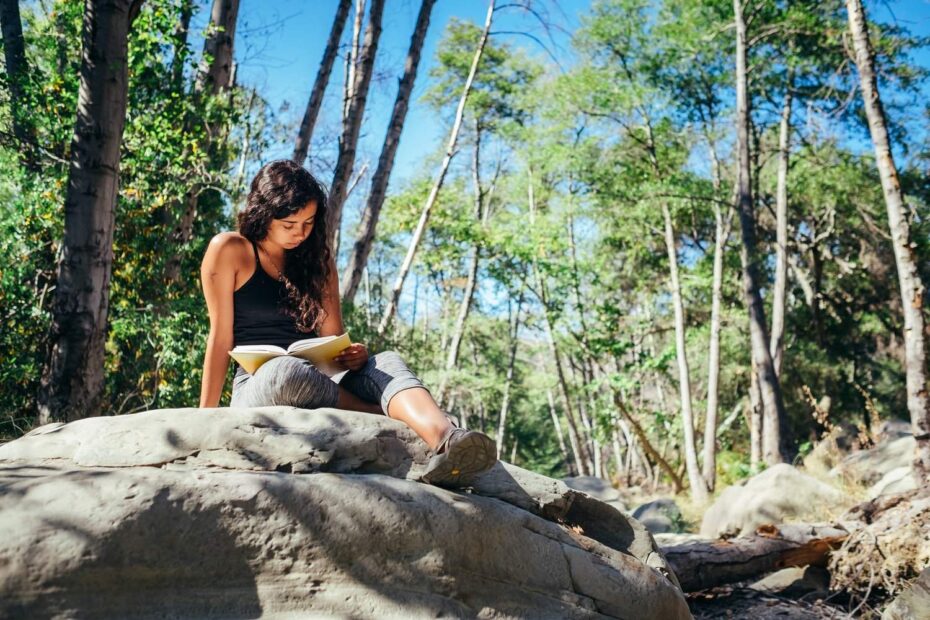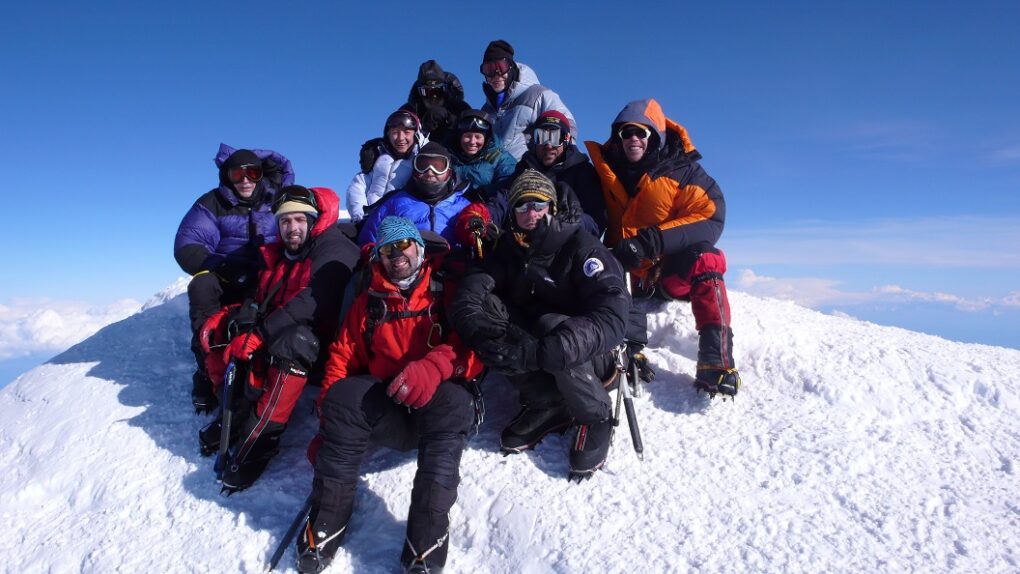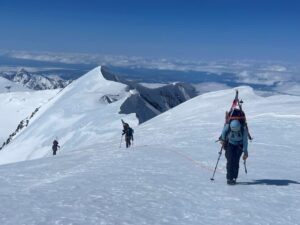In a world where wanderlust knows no bounds and adventure beckons from every corner, the allure of travel is irresistible. However, as the cost of living rises and economic uncertainties loom, the dream of exploring far-flung destinations can often seem like a luxury reserved for the privileged few. This is where the concept of budget travel steps in, offering a glimmer of hope to those with a thirst for exploration but a limited wallet.
Embracing Budget Travel
Budget travel, once seen as a compromise on comfort and luxury, has now evolved into a lifestyle choice embraced by millions. It’s not just about pinching pennies; it’s about the thrill of uncovering hidden gems, immersing oneself in local culture, and embarking on adventures that leave lasting memories without breaking the bank.
The Challenges of Traveling on a Budget
However, navigating the world of budget travel in 2024 comes with its own set of challenges. With the ever-increasing costs of flights, accommodations, and tourist attractions, finding affordable destinations can feel like searching for a needle in a haystack. The rise of global events, economic fluctuations, and geopolitical tensions further complicate matters, making it crucial for budget travelers to plan meticulously and adapt to changing circumstances.
The Appeal of Cheap Destinations
Yet, amidst these challenges lies an opportunity – the chance to explore the cheapest countries in the world. Choosing a budget-friendly destination not only allows travelers to stretch their funds further but also opens doors to unique experiences and cultural immersion. From savoring exotic cuisines to wandering through ancient ruins, these affordable destinations offer a glimpse into a world rich in diversity and beauty, all without breaking the bank.
In the upcoming sections, we’ll delve into the top 10 cheapest countries in 2024, unveiling hidden treasures and practical tips for budget travelers seeking adventure without compromise. So, dust off your backpack, grab your passport, and join us on a journey to discover the world’s most affordable destinations.
Top 10 Cheapest Countries in 2024 (By Region):
Southeast Asia
Vietnam:
Vietnam, a vibrant Southeast Asian gem, beckons budget travelers with its blend of affordability and adventure. Here’s why it’s a top pick:
- Affordable Street Food: Indulge in a gastronomic adventure without breaking the bank. From pho to banh mi, Vietnam’s street food scene offers delectable treats at pocket-friendly prices.
- Beautiful Beaches: Sink your toes into soft sands and soak up the sun on Vietnam’s stunning beaches. With options like Ha Long Bay and Phu Quoc Island, beach bliss is within reach for budget-conscious travelers.
- Rich History: Immerse yourself in Vietnam’s rich history and culture without splurging. Explore ancient temples, bustling markets, and poignant war memorials that offer insight into the country’s past.
- Stunning Landscapes: From the terraced rice fields of Sapa to the lush greenery of the Mekong Delta, Vietnam boasts breathtaking landscapes that won’t cost you a fortune to explore.
- Average Daily Budget: With an average daily budget ranging from $35 to $50 USD, Vietnam proves to be an affordable haven for travelers seeking value without sacrificing experiences.
Thailand:
Thailand, a captivating destination in Southeast Asia, offers a blend of cultural wonders, natural beauty, and culinary delights. Here’s why it’s a must-visit:
Bustling Cities:
- Bangkok: Dive into the vibrant chaos of Thailand’s capital city. Explore bustling markets, ornate temples, and modern skyscrapers that coexist in this dynamic metropolis.
Ancient Temples:
- Wat Pho: Marvel at the grandeur of Thailand’s ancient temples. Wat Pho, home to the reclining Buddha, stands as a testament to the country’s rich architectural heritage.
World-Class Diving:
- Phuket: Discover the underwater wonders of Thailand’s pristine waters. Phuket, known for its vibrant coral reefs and diverse marine life, offers unparalleled diving and snorkeling experiences.
Delicious Cuisine:
- Street Food: Indulge your taste buds in Thailand’s world-renowned cuisine. From flavorful curries to mouthwatering street eats, every meal is a culinary adventure.
Average Daily Budget:
- With an average daily budget ranging from $40 to $60 USD, Thailand caters to travelers of all budgets, ensuring memorable experiences without breaking the bank.
Indonesia:
Indonesia, an archipelago of over 17,000 islands, beckons travelers with its diverse landscapes, rich biodiversity, and warm hospitality. Here’s why it’s a top destination:
Diverse Landscapes:
- Volcanoes: Witness the raw power of nature amidst Indonesia’s volcanic landscapes. Mount Bromo, Kawah Ijen, and Mount Rinjani offer breathtaking views and adventurous trekking opportunities.
- Beaches: Bask in the sun on Indonesia’s pristine beaches. From the famous shores of Bali to the secluded coves of Komodo Island, there’s a beach for every type of traveler.
- Rainforests: Explore the lush greenery of Indonesia’s rainforests. Home to diverse flora and fauna, places like Taman Negara and Gunung Leuser National Park offer unforgettable eco-adventures.
Unique Wildlife:
- Komodo Dragons: Encounter the legendary Komodo dragons in their natural habitat. Komodo National Park provides a rare opportunity to see these fascinating creatures up close.
- Orangutans: Journey into the jungles of Borneo and Sumatra to spot orangutans in the wild. Conservation efforts in places like Tanjung Puting National Park aim to protect these endangered primates.
Friendly Locals:
- Hospitality: Experience the warmth and friendliness of Indonesia’s people. Whether you’re exploring traditional villages or enjoying a meal at a local warung, you’ll be greeted with smiles and hospitality.
Average Daily Budget:
- With an average daily budget ranging from $30 to $50 USD, Indonesia offers incredible value for travelers seeking adventure, relaxation, and cultural immersion without breaking the bank.
Central and South America
Bolivia:
Bolivia, a landlocked country in the heart of South America, offers travelers a wealth of natural wonders and cultural experiences at affordable prices. Here’s why it’s a must-visit destination:
- Salar de Uyuni: Embark on a surreal journey across the vast expanse of the Salar de Uyuni salt flats. The world’s largest salt flat, it creates a mesmerizing mirror effect during the rainy season, offering stunning photo opportunities.
- Majestic Andes Mountains: Marvel at the beauty of the Andes Mountains, which cut through Bolivia’s landscape. Whether trekking through the Cordillera Real or exploring the ancient ruins of Tiwanaku, the Andes provide a backdrop of breathtaking scenery.
- Rich Indigenous Cultures: Immerse yourself in Bolivia’s diverse indigenous cultures. From the vibrant markets of La Paz to the traditional villages of Lake Titicaca, you’ll encounter ancient customs, colorful textiles, and welcoming communities.
Average Daily Budget:
- With an average daily budget ranging from $40 to $60 USD, Bolivia is a budget traveler’s paradise, offering affordable accommodations, transportation, and dining options amidst some of the most stunning landscapes and cultural experiences in South America.
Colombia:
Colombia, a country known for its diverse landscapes and rich cultural heritage, offers travelers a plethora of experiences to explore. Here’s why it’s a top destination:
Vibrant Cities:
- Bogotá: Discover the vibrant capital city of Colombia. Explore its historic neighborhoods, such as La Candelaria, and immerse yourself in its thriving arts and culinary scenes.
- Medellín: Experience the transformation of Medellín from a once-infamous city to a modern metropolis. Ride the cable cars to enjoy panoramic views and explore its innovative urban projects.
Stunning Coffee Region:
- Eje Cafetero: Journey to Colombia’s Coffee Region, a UNESCO World Heritage Site. Trek through lush coffee plantations, visit charming towns like Salento, and savor some of the world’s finest coffee.
Beautiful Caribbean Coastline:
- Cartagena: Wander through the cobblestone streets of Cartagena’s Old Town, a colonial gem on the Caribbean coast. Relax on pristine beaches, explore ancient fortresses, and soak in the vibrant atmosphere.
Diverse Ecosystems:
- Tayrona National Park: Escape to the natural beauty of Tayrona National Park. Hike through tropical rainforests, swim in crystal-clear waters, and camp under the stars along the Caribbean coastline.
Average Daily Budget:
- With an average daily budget ranging from $50 to $70 USD, Colombia offers affordable accommodations, delicious cuisine, and a wealth of experiences for travelers seeking to explore its vibrant cities, stunning landscapes, and rich cultural heritage.
Eastern Europe
Czech Republic:
The Czech Republic, nestled in the heart of Europe, offers travelers a blend of enchanting architecture, rich history, and affordable experiences. Here’s why it’s a top destination:
- Enchanting Prague: Step into the fairytale city of Prague, where medieval charm meets modern vibrancy. Explore the historic Old Town, wander across the iconic Charles Bridge, and marvel at the majestic Prague Castle.
- Medieval Towns: Venture beyond Prague to discover the Czech Republic’s medieval towns. From the picturesque Cesky Krumlov to the well-preserved Kutná Hora, each town offers a glimpse into the country’s storied past.
- Affordable Beer: Indulge in the Czech Republic’s beer culture without breaking the bank. With a long-standing tradition of brewing some of the world’s finest beer, you can enjoy a pint of local brew at a fraction of the cost compared to other European cities.
- Rich History: Immerse yourself in the country’s rich history and cultural heritage. Visit historic sites like the Karlštejn Castle or the bone-adorned Sedlec Ossuary, and uncover layers of history spanning centuries.
Average Daily Budget:
- With an average daily budget ranging from $45 to $60 USD, the Czech Republic offers affordable accommodations, delicious cuisine, and a wealth of cultural experiences for travelers seeking to explore its enchanting cities, medieval towns, and rich history.
Hungary:
Hungary, nestled in Central Europe, boasts a unique blend of history, culture, and natural beauty. Here’s why it’s a top destination:
Thermal Baths in Budapest:
- Széchenyi Thermal Bath: Experience relaxation at its finest in Budapest’s Széchenyi Thermal Bath, one of the largest spa complexes in Europe. Soak in the healing waters of thermal pools, surrounded by stunning Neo-Baroque architecture.
- Gellért Thermal Bath: Indulge in luxury at the Gellért Thermal Bath, renowned for its Art Nouveau style and therapeutic treatments. Relax in mineral-rich thermal waters while enjoying panoramic views of the city.
Beautiful Danube River Scenery:
- Danube Bend: Explore the picturesque Danube Bend, where the river winds through lush valleys and historic towns. Take a cruise along the Danube to admire medieval castles, charming villages, and scenic landscapes.
Delicious Hungarian Cuisine:
- Goulash: Sample Hungary’s national dish, goulash, a hearty stew made with tender meat, vegetables, and paprika. Enjoy it with freshly baked bread for a satisfying meal that reflects Hungary’s culinary traditions.
- Langos: Treat yourself to langos, a popular Hungarian street food made of fried dough topped with savory or sweet toppings like cheese, garlic, or Nutella. It’s a delicious snack to enjoy while exploring Budapest’s markets or festivals.
Average Daily Budget:
- With an average daily budget ranging from $40 to $50 USD, Hungary offers affordable accommodations, dining, and attractions for travelers seeking to unwind in thermal baths, explore the Danube River, and savor delicious Hungarian cuisine.
Other Regions
Nepal:
Nepal, nestled in the lap of the Himalayas, offers travelers unparalleled trekking adventures, stunning mountain scenery, and rich cultural experiences. Here’s why it’s a top destination:
- Trekking Adventures in the Himalayas:
- Everest Base Camp Trek: Embark on the iconic Everest Base Camp trek, a challenging yet rewarding journey that takes you through picturesque Sherpa villages, towering peaks, and breathtaking glaciers.
- Annapurna Circuit Trek: Explore the Annapurna Circuit, known for its diverse landscapes and cultural encounters. Trek through lush forests, arid valleys, and high mountain passes while immersing yourself in Nepalese hospitality.
- Breathtaking Mountain Scenery:
- Himalayan Panoramas: Marvel at the awe-inspiring beauty of the Himalayas, home to some of the world’s highest peaks, including Mount Everest, Annapurna, and Kanchenjunga. Enjoy panoramic views of snow-capped mountains, cascading waterfalls, and pristine alpine lakes.
- Rich Cultural Experiences:
- Kathmandu Valley: Discover the cultural treasures of the Kathmandu Valley, where ancient temples, stupas, and palaces dot the landscape. Explore UNESCO World Heritage Sites like Pashupatinath, Boudhanath, and Bhaktapur Durbar Square.
- Local Festivals: Immerse yourself in Nepal’s vibrant culture by participating in local festivals like Dashain, Tihar, and Holi. Experience traditional music, dance, and rituals that celebrate the country’s religious and cultural heritage.
Average Daily Budget:
- With an average daily budget ranging from $30 to $50 USD, Nepal offers affordable accommodations, meals, and transportation for travelers seeking adventure, natural beauty, and cultural immersion in the Himalayas.
Morocco:
Morocco, located in North Africa, is a land of vibrant culture, stunning landscapes, and mouthwatering cuisine. Here’s why it’s a top destination:
Bustling Medinas:
- Marrakech: Lose yourself in the labyrinthine streets of Marrakech’s medina, where bustling souks offer everything from spices to handcrafted goods. Don’t miss the iconic Jemaa el-Fnaa square, alive with street performers and vendors.
- Fes: Explore the ancient medina of Fes, a UNESCO World Heritage Site known for its winding alleys and historic architecture. Discover hidden gems like the tanneries and madrasas tucked away in this vibrant city.
Stunning Sahara Desert Landscapes:
- Sahara Desert: Embark on a desert adventure to the Sahara, where endless sand dunes stretch as far as the eye can see. Experience the magic of camel trekking and camping under the stars in traditional Berber camps.
- Atlas Mountains: Marvel at the rugged beauty of the Atlas Mountains, which rise majestically across Morocco’s landscape. Trek through scenic valleys, visit picturesque Berber villages, and enjoy panoramic views of snow-capped peaks.
Delicious Moroccan Cuisine:
- Tagine: Indulge in the rich flavors of Moroccan cuisine with a traditional tagine, a slow-cooked stew of meat, vegetables, and aromatic spices. Savor the tender meat and fragrant sauce, served piping hot in a clay pot.
- Mint Tea: Refresh yourself with a glass of sweet mint tea, a Moroccan staple served with hospitality in homes and cafes across the country. The combination of mint leaves, green tea, and sugar creates a delightful drink enjoyed throughout the day.
Average Daily Budget:
- With an average daily budget ranging from $40 to $60 USD, Morocco offers affordable accommodations, dining, and transportation for travelers seeking to immerse themselves in the charm of its bustling medinas, explore the beauty of the Sahara Desert, and savor the flavors of its delicious cuisine.
Planning Your Budget Trip:
Factors to Consider:
When planning a budget trip, there are several key factors to keep in mind to ensure you make the most of your funds. Here are some considerations:
- Travel Style:
- Determine your preferred travel style, whether it’s backpacking, opting for mid-range accommodations, or seeking luxury on a budget. Your travel style will dictate many of your expenses throughout the trip.
- Length of Trip:
- Consider the duration of your journey. Longer trips may require more meticulous budgeting to ensure sustainability over time, while shorter trips may allow for slightly more flexibility.
- Accommodation Options:
- Explore different accommodation options to find the best fit for your budget and preferences. Hostels, guesthouses, and homestays often offer affordable rates and opportunities to connect with locals.
- Transportation Costs:
- Research transportation options and costs, including buses, trains, and local flights. Opting for slower, more budget-friendly modes of transport can help save money, but be sure to factor in travel time.
- Food and Activities:
- Budget for meals and activities during your trip. Consider dining at local eateries for authentic and budget-friendly cuisine, and prioritize free or low-cost activities such as hiking, visiting parks, or exploring markets.
Example:
For example, if you’re planning a backpacking trip through Southeast Asia:
- You might opt for budget accommodations like hostels or guesthouses, which can range from $5 to $20 USD per night.
- Transportation costs could include budget airlines, local buses, and trains, with fares varying depending on the distance and mode of travel.
- Food expenses may be relatively low, with street food and local markets offering delicious meals for just a few dollars.
- Activities such as exploring temples, hiking to waterfalls, or taking cooking classes can provide memorable experiences without breaking the bank.
Cost-Saving Tips:
Here are some practical tips to help you save money while traveling:
Travel during the Shoulder Seasons:
- Explanation: Avoid peak travel times and take advantage of the shoulder seasons, which are typically just before or after the high season. During these times, you can find lower prices for accommodations and activities, as well as fewer crowds.
- Example: Instead of visiting Europe in the summer, consider traveling in the spring or fall to enjoy milder weather and reduced prices.
Consider Alternative Accommodation:
- Explanation: Look beyond traditional hotels and consider alternative options such as hostels, guesthouses, or homestays. These accommodations often offer lower rates while providing unique cultural experiences.
- Example: Instead of booking a hotel, opt for a hostel dormitory or a room in a local guesthouse to save money and connect with fellow travelers.
Utilize Public Transportation:
- Explanation: Use public transportation whenever possible to save on transportation costs. Trains, buses, and subways are often more budget-friendly than taxis or rental cars, especially for getting around cities.
- Example: Instead of taking a taxi from the airport to your hotel, research public transportation options like airport shuttles or trains, which are typically cheaper.
Embrace Street Food:
- Explanation: Explore the local culinary scene by indulging in street food, which is not only delicious but also affordable. Street vendors often offer authentic dishes at a fraction of the cost of restaurants.
- Example: Instead of dining at expensive restaurants, try sampling street food specialties like tacos in Mexico, banh mi in Vietnam, or empanadas in Argentina.
Free Walking Tours and Activities:
- Explanation: Take advantage of free walking tours and activities offered in many cities around the world. These tours are led by knowledgeable guides who provide insights into the local culture and history, allowing you to explore without spending a dime.
- Example: Instead of booking expensive guided tours, join a free walking tour of landmarks like Old Town Prague, the historical center of Rome, or the vibrant neighborhoods of Buenos Aires.
Conclusion:
Budget travel offers a world of possibilities, allowing adventurers to stretch their funds while experiencing new cultures and destinations. This article has described the benefits and offered some encouragement to start planning your next budget-friendly adventure.
FAQ:
What are some of the most affordable ways to travel?
- Backpacking allows you to travel light and explore destinations on a budget.
- Volunteering opportunities often provide free accommodation and meals in exchange for your time and skills.
- House-sitting allows you to stay in a destination for free while taking care of someone’s home and pets.
How can I find cheap flights and accommodation?
- Use travel search engines like Skyscanner or Kayak to compare flight prices and find the best deals.
- Consider flying with budget airlines or booking flights during off-peak times for lower fares.
- Explore hostel booking websites such as Hostelworld or Booking.com for affordable accommodation options.
Is it safe to travel to cheap countries?
- Research destinations thoroughly before traveling and stay informed about any safety concerns or travel advisories.
- Follow general safety tips such as staying aware of your surroundings, avoiding risky areas, and securing your belongings.
What are some essential things to pack for a budget trip?
- Versatile clothing that can be mixed and matched for different weather conditions and activities.
- A reusable water bottle to stay hydrated while reducing plastic waste.
- A first-aid kit with essential medications, bandages, and supplies for minor injuries and illnesses.

